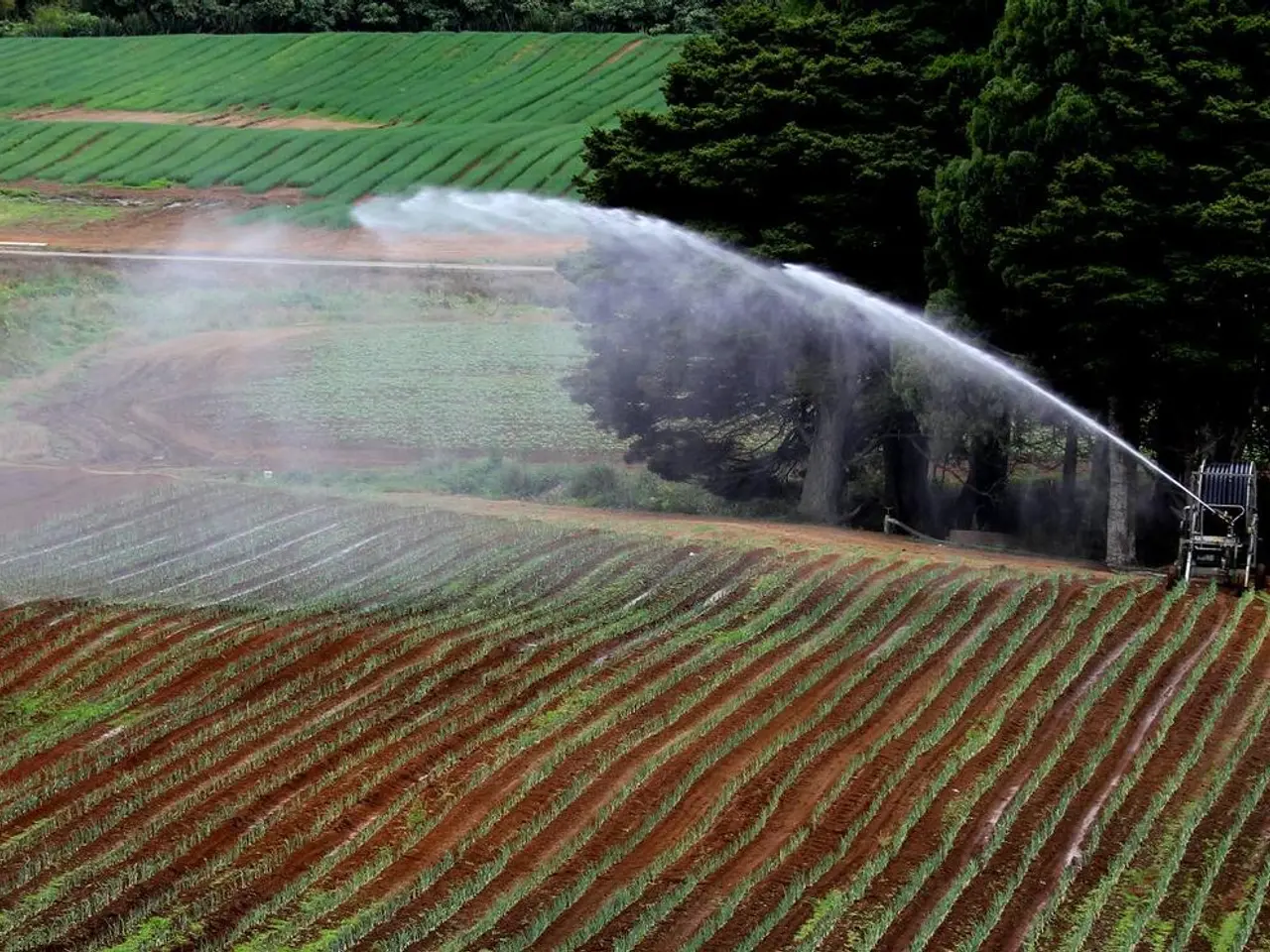Increase in Seasonal Worker Wages Potentially Leading to Higher Prices for Produce Items Like Strawberries, Asparagus, and Others?
Minimum Wage Increase and its Impact on German Agriculture
Germany's agricultural sector is set to experience a change as the national minimum wage increases to €12.82 per hour from January 2025. This rise in labor costs could potentially impact the competitiveness of domestic farming, particularly in fruit and vegetable production.
Currently, Germany's self-sufficiency rate for vegetables stands at 37 percent, while for fruits, it's 20 percent. However, data from the Federal Ministry of Agriculture shows that these rates have remained constant over the past 20 years.
The increase in minimum wage will undoubtedly boost personnel costs, making up a larger share of total production costs in agriculture. This could lead to higher prices for locally produced fruits and vegetables, potentially making them less competitive against imports.
Agriculture, particularly in Rhineland-Palatinate and Baden-Württemberg, is heavily dependent on manual labor, making the sector particularly vulnerable to labor cost increases. Special cultures such as viticulture and fruit and vegetable farming require a lot of manual labor, adding to the sector's reliance on affordable labor.
However, it's important to note that this is just one factor among many affecting self-sufficiency and trade in agricultural products. Germany remains one of the largest exporters and importers of consumer-oriented agricultural products globally, characterized by strong competition and low food prices driven by discount retailers.
Employment levels in Germany are relatively stable, and unemployment remains low, suggesting that labor market changes and wage increases have not yet caused major disruptions in employment, including in agriculture.
Critics warn that if farms abandon fruit and vegetable cultivation due to high labor costs, self-sufficiency rates may drop significantly, leading to an increase in imports. However, the Netherlands, one of the largest suppliers of fruits and vegetables to the German market, currently has a minimum wage of €14.40 per hour, higher than many EU countries that German farmers compete with, such as Spain and Poland.
Despite the high minimum wage, businesses in the Netherlands are profitable and export fruit to Germany. The Industrial Union of Construction, Agriculture, and Environment (IG BAU) points out that local farmers in the Netherlands have consistently invested in modern technology, automation, and targeted work organization, which could be a strategy for German farmers to adopt.
The Association of South German Strawberry and Asparagus Growers (VSSE) believes that strawberry and asparagus cultivation can continue, particularly in urban areas for direct marketing with high-quality products and a wide range. However, production for trade may shift further north, where larger areas can be used more efficiently.
In conclusion, while higher minimum wages may pressure agricultural producers and could lead some to reduce production or rely more on imports, this is moderated by other dynamics such as market competition, consumer demand for quality and price, and broader inflation trends. Additionally, efficiency improvements, mechanization, and policy support can mitigate negative effects. Hence, the increase in minimum wage contributes to pressures on self-sufficiency but does not solely determine import reliance; broader economic, market, and policy factors also play significant roles.
Sports enthusiasts might find it challenging to sideline their passions due to the increased minimum wage, as the abrupt increase in labor costs could lead to higher prices for leisure activities in sectors heavily reliant on manual labor, such as parks and gyms that offer recreational sports.
Moreover, the potential rise in sports club membership fees could leave some individuals unable to afford the hobby, thereby reducing the number of active sportspersons within the community. This, in turn, could result in a less vibrant and diverse sports culture.








